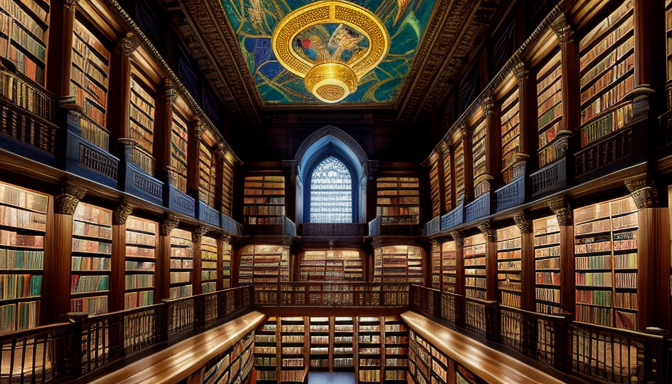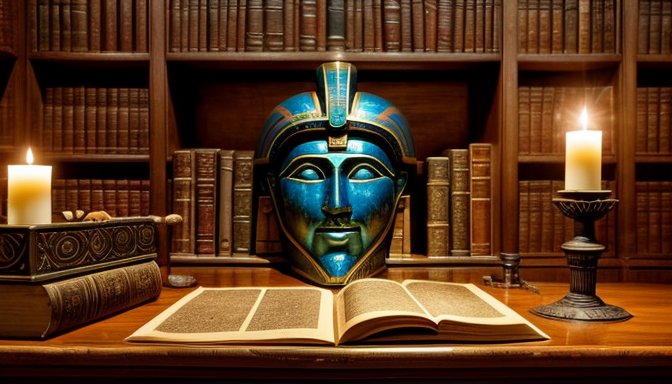Myths are not just ancient tales; they are the very foundation of our cultures. From the epic sagas of Greek gods to the enchanting stories of indigenous tribes, these narratives have shaped our understanding of the world. Have you ever wondered why certain themes resonate across different cultures? It’s because myths often address universal human experiences—love, loss, and the quest for knowledge. They serve as mirrors reflecting our values and beliefs, helping us navigate the complexities of life.
Take a moment to think about your favorite story. Is it a heroic journey, a tragic love affair, or perhaps an adventure filled with fantastical creatures? These stories often draw from ancient myths, weaving them into modern narratives. For instance, the hero’s journey archetype, found in countless tales from Homer’s “Odyssey” to J.K. Rowling’s “Harry Potter,” illustrates the struggle and growth of characters in a way that resonates deeply with audiences.
Moreover, myths provide a rich tapestry of pantheons and origin stories that enhance our understanding of fictional worlds. They invite us to immerse ourselves in narratives that are not just entertaining but also enlightening. As we delve into these ancient tales, we uncover the wisdom of our ancestors, which can still guide us today. So, the next time you pick up a book or watch a movie, consider the myths that may have influenced the story. They are the threads that connect us to our past and illuminate our future.
The Role of Myths in Society
Myths are more than just ancient tales; they are the bedrock of our cultures, shaping the very essence of human experience. From the epic stories of gods and heroes to the subtle whispers of nature spirits, these narratives encapsulate the values, beliefs, and traditions that define communities worldwide. Think of myths as the original social media—a way for people to communicate shared ideals, fears, and aspirations long before the digital age. They provide a framework for understanding the world, offering explanations for life’s mysteries and the unknown.
In every corner of the globe, you’ll find a rich tapestry of myths that not only connect us to our ancestors but also to one another. For instance, consider the pantheon of gods in Greek mythology. Each deity represents different aspects of life, from love and war to wisdom and agriculture. These stories serve as a moral compass, guiding individuals on how to navigate the complexities of human existence. They teach lessons about courage, loyalty, and sacrifice, often through the trials faced by their protagonists.
Moreover, these ancient tales often provide a sense of community and identity. They allow individuals to see themselves as part of a larger narrative, fostering a sense of belonging. This is particularly evident in the way modern societies continue to draw from these myths, reinterpreting them in literature, art, and even film. Just as a well-crafted story pulls you in, myths invite us to explore deeper narratives that resonate with our own lives.

Mythology’s Influence on Art and Literature
Mythology has been a profound source of inspiration for artists and writers for centuries. From the epic tales of Homer to the intricate paintings of Michelangelo, ancient myths have shaped the very fabric of art and literature. These stories, rich with symbolism and emotion, allow creators to delve into the human experience, exploring themes of love, conflict, and morality in ways that resonate deeply with audiences.
Consider the pantheon of gods and goddesses from various cultures. Each deity embodies specific traits and stories that artists can portray in their work. For instance, the Greek goddess Athena represents wisdom and warfare, inspiring countless sculptures and paintings that capture her fierce yet intelligent nature. Similarly, the tragic love story of Orpheus and Eurydice has been reimagined in numerous forms, from operas to modern novels, highlighting how these ancient narratives can transcend time and culture.
Moreover, mythology provides a rich tapestry for world-building in fiction. Authors often weave these tales into their narratives, creating immersive universes that echo our reality while inviting readers to explore the extraordinary. For example, J.K. Rowling’s Harry Potter series draws on various mythological elements, from the phoenix to centaurs, enriching the story with layers of meaning and connection to ancient lore.
In summary, the influence of mythology on art and literature is undeniable. It serves not only as a source of inspiration but also as a means of connecting with our shared humanity. By examining these ancient tales, we gain insights into the values and beliefs that have shaped societies throughout history.
Frequently Asked Questions
- What are myths, and why are they important?
Myths are traditional stories that explain natural or social phenomena. They are crucial because they reflect the values, beliefs, and cultural heritage of societies, helping us understand our past and guiding our present.
- How do myths influence modern culture?
Myths shape our cultural narratives, influencing everything from literature to movies. They provide frameworks for storytelling, allowing us to explore complex themes like heroism, morality, and the human experience.
- Can you give examples of myths in art and literature?
Absolutely! Think of Homer’s “Iliad” or the countless adaptations of Greek myths in contemporary films. These stories resonate deeply, offering timeless lessons and emotional depth that continue to inspire artists and writers today.
- Are myths still relevant in today’s society?
Definitely! Myths remain relevant as they help us navigate modern challenges, providing wisdom and perspective. They remind us of our shared humanity and the timeless questions we all face.

Recent Comments